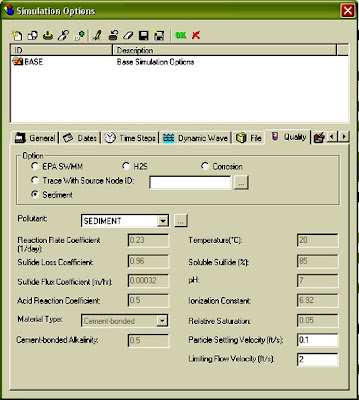📊 SWMM 5 Complexity Index 📊
The SWMM 5 Complexity Index offers a way to measure a model's intricacy against a benchmark: the first Extran example in Extran 3, now referred to as network #1 in this broader SWMM 5 context. The foundational network showcases 22 objects and runs simulations over 8 hours. 🕗 Notably, it took 5 minutes to process this network on an IBM AT back in 1988. 🖥️⏳
The core aim of this complexity index? To provide a comparative tool for contemporary models. 📈🔄 The complexity formula evaluates the object count in the new model versus the baseline, while also accounting for any extensions in simulation time. 🔄🔍📏
📊 Complexity Index Breakdown 📊
The complexity index consolidates the count of various elements: raingages, subcatchments, junctions, outfalls, dividers, storages, conduits, pumps, orifices, weirs, outlets, control curves, and many more, right up to snowpack objects. 🌧️🌍🚰🔀🌊
For a more nuanced understanding, this index is then amplified by tallying pollutants across various elements like subcatchments, junctions, or weirs. Additionally, the multiplication of the number of land uses by the count of subcatchment objects is considered. 🧪🔄🌳🏘️
To gauge its relative complexity, this index is juxtaposed against network #1. This involves dividing the freshly computed complexity index by the foundational 22 objects and contrasting the new network's duration against the 8-hour benchmark of the base network. 🕗📏 The exemplified network flaunts a complexity rating of 5.2 and, impressively, executes in under a second on an Intel Dual Core Processor. 🖥️⚡
🔍 Understanding the Complexity Index
The complexity index is a comprehensive metric that sums up various components of a given hydrologic model. Specifically, it aggregates:
Rain gauges, subcatchments, junctions, outfalls, dividers, storages, conduits, pumps, orifices, weirs, outlets, and several curve types (control, diversion, pump, rating, shape, storage, tidal), as well as time series, patterns, transects, hydrographs, aquifers, controls, climate objects, and snowpacks. 🌦️🌍🚰
The index is then adjusted by taking into account the number of pollutants for multiple components like subcatchments, junctions, outfalls, and so forth. 🧪
Additionally, it factors in the number of land uses multiplied by the count of subcatchment objects. 🌲🏙️
📏 Comparing the Complexity Index:
To gauge the relative complexity of a network:
- The computed complexity index is divided by a baseline value of 22 objects. 📊
- The duration of the new network is normalized against an 8-hour duration of a reference network. 🕗
For example, a showcased network had a complexity index of 5.2 and executed in under a second on an Intel Dual Core Processor. 💨🖥️
📂 Complexity Indices from Sample Models:
Using the EPA SWMM 5 QA/QC suite of files, the complexity indices for different models in the DATA.ZIP file are:
- USER4.INP: 88.5 📈
- USER1.INP: 7.4 📉
- USER2.INP: 55 📊
- USER3.INP: 20.1 📉
- USER5.INP: 18.5 📉
In essence, the complexity index provides a quantitative measure of a hydrologic model's intricacy, enabling modelers to benchmark and optimize performance efficiently. 👩💼🔧📊









